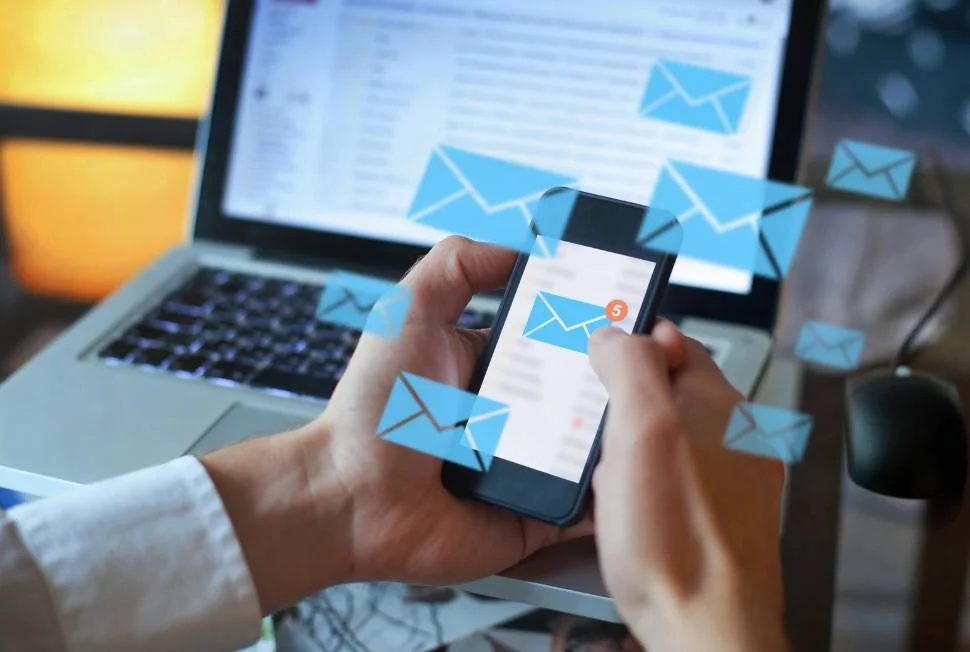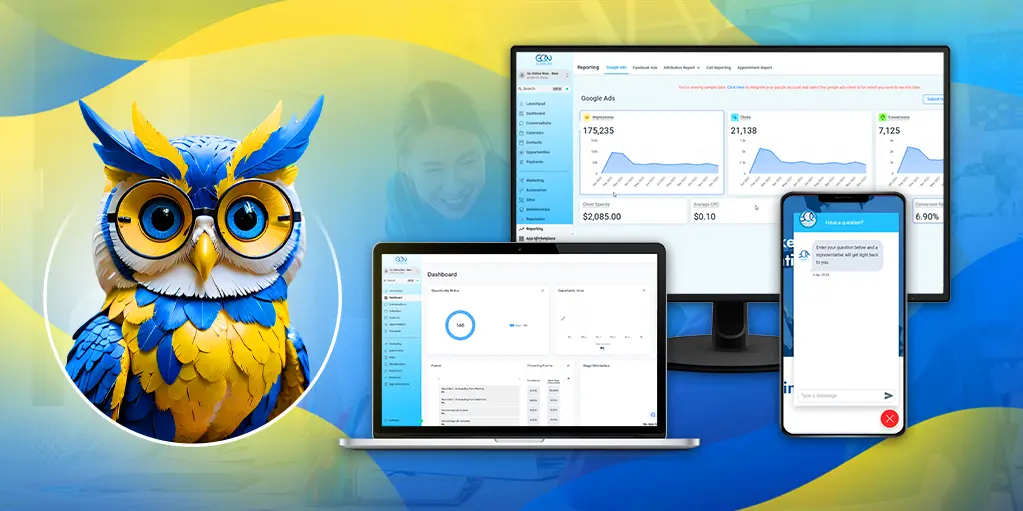One of the most effective ways to expand your customer base and establish long-term relationships with your clients and consumers is through an email marketing campaign. Learn how to create, implement, and track a successful email marketing strategy that improves sales while also building connections.
Do you know who the best email marketers are? They’ve perfected the art of generating the precise message that gets results and can help your company reach its maximum potential.
Here are some pointers on how to create an efficient email marketing campaign strategy:
Define the goal of your campaign
The first step in developing an efficient email marketing campaign is to determine the purpose of the campaign. What do you hope to accomplish with your campaign? Do you want to enhance website traffic, lead generation, or sales? You may adapt your campaign plan after you have a clear purpose.
Defining your campaign’s purpose is an important first step in developing an effective email marketing campaign. Before you begin designing and sending emails, you must have a clear concept of what you want to achieve with your campaign.
To begin, think about the exact goals you want to achieve with your email marketing campaign. Do you want to increase the number of visitors to your website? Do you want to create leads or increase sales? Maybe you’d like to raise brand awareness or promote a new product or service. Your purpose will be determined by your overall marketing objectives as well as the campaign’s specific goals.
Once you have a clear goal in mind, you can begin to build a targeted email marketing approach that will help you achieve it. For example, if increasing website traffic is your aim, you might concentrate on crafting engaging calls to action (CTAs) that urge recipients to click through to your website. If generating leads is your goal, you may develop a lead magnet or give a unique discount to persuade recipients to provide their contact information.
Overall, having a clearly defined campaign purpose is critical for ensuring that your email marketing efforts are productive and connected with your overall marketing goals. You can enhance the impact of your email marketing and achieve greater results by taking the time to examine your goals and customize your strategy accordingly.
Create an email list
Building a high-quality email list is critical to your campaign’s success. Offering lead magnets or incentives in exchange for email sign-ups, displaying sign-up forms on your website, or running social media ads are all ways to expand your email list.
Creating an email list is an important component of any successful email marketing strategy. Because a high-quality list of engaged subscribers is more likely to result in higher website traffic, lead creation, and sales, the quality of your email list has a direct impact on the success of your campaign. Here are some strategies for a high-quality email list building:
Offer lead magnets or incentives: A lead magnet is a free resource or offer given in exchange for someone’s email address. E-books, webinars, templates, and unique discounts are all examples of lead magnets. You may persuade individuals to join up for your email list and share their contact information by providing a good incentive.
Install sign-up forms on your website: Including sign-up forms on your website is an excellent technique to collect visitors’ email addresses. Put forms on your homepage, about page, and blog posts to give people various ways to join your mailing list. Make sure your forms are visible and simple to fill out.
Run social media advertisements: Social media ads can be an excellent way to reach out to new people and persuade them to join your email list. Consider launching Facebook, Instagram, or LinkedIn advertisements that target your desired audience and provide a compelling incentive to join up.
Organize events: As part of the registration process, consider gathering email addresses from participants. You can also gather email addresses at trade shows or other industry events where you exhibit where you exhibit.
Encourage your current subscribers to refer their friends and colleagues to sign up for your email list by using referral marketing. Provide an incentive or reward, such as a discount or a free resource, for each new subscription they refer.
Remember that establishing an email list takes time and effort, but the benefits of having a high-quality list of engaged subscribers who are interested in your content and products are well worth the effort. You can establish a robust email list that supports the success of your email marketing campaigns by combining approaches and continually focusing on list growth.
Customize your emails
Personalization is essential for making your emails stand out and connect with your recipients. Use your subscribers’ first names in your emails, segment your list depending on their interests or activities, and provide tailored communications with dynamic content.
One of the most effective ways to connect with your audience and enhance engagement with your email marketing is to personalize your emails. Here are a few ideas for personalizing your emails:
Address your subscribers by their first names: Using their first names is a simple yet effective method to personalize your emails. Including their name in the subject line and introductory sentence can pique their interest and encourage them to read further.
Segmenting your email list allows you to target certain groups of users with customised messaging. You can categorize your list based on demographics, behavior, or hobbies. If you’re a retailer, for example, you may split your list based on previous purchase history or product preferences. Then, to make your messaging and offers more relevant and engaging, personalize them to each category.
Use dynamic content: Dynamic content allows you to customize your email content based on the preferences or behavior of the specific receiver. For example, based on their browsing history on your website, you may provide various product recommendations to different subscribers. This level of personalisation can make your emails feel more suited to the requirements and interests of each recipient.
Triggered emails are automatic emails that are sent in response to a certain action or behavior by the recipient. For example, you could send a welcome email to new subscribers, an abandoned cart email to those who didn’t complete their purchase, or a re-engagement email to subscribers who haven’t viewed your emails in a while. Triggered emails have the potential to be highly tailored and relevant to the recipient’s current requirements or interests.
You can make your subscribers feel seen and heard by customizing your emails, which can lead to higher engagement, loyalty, and, eventually, purchases. Always remember to provide value and relevancy to your subscribers with each email you send. You can design tailored email campaigns that resonate with your audience and deliver results for your organization using these tactics.
Make your emails more automated
Automation can save you time and effort while ensuring that your subscribers receive messages that are timely and relevant. You may automate welcome emails, abandoned cart reminders, and post-purchase follow-ups, to name a few options.
Email automation can help you streamline your email marketing operations and ensure that your subscribers receive timely, relevant information. Here are some ideas for using automation to boost your email campaigns:
Welcome emails: The first communication that subscribers receive after joining your email list is a welcome email. You can ensure that new subscribers receive a timely and consistent welcome message by automating your welcome email. You can also take use of this chance to introduce your business, set expectations for future emails, and provide a particular incentive to new subscribers.
Abandoned cart emails are automated notifications delivered to subscribers who have placed things to their shopping cart but have not finished their transaction. These emails can assist you in recouping lost revenues and encouraging subscribers to complete their purchases. To entice customers to complete their order, you can also offer a discount or free shipping.
Post-purchase follow-ups: Automating post-purchase follow-up emails will help you develop your customer relationships and encourage repeat purchases. You can send personalized thank-you cards, solicit feedback or reviews, and suggest similar items or services.
Drip campaigns are a series of automatic emails sent to subscribers over time based on their actions or interests. For example, you might set up a drip campaign that sends new subscribers a series of instructive emails over the course of a few weeks. Alternatively, you might conduct a drip campaign to subscribers who have expressed an interest in a specific product or service.
You may save time and effort by automating your emails while still ensuring that your subscribers receive timely and relevant communications. Automation helps you to stay in touch with your subscribers and cultivate your relationship with them without the need for ongoing manual effort. You may use these tactics to design powerful automated email campaigns that deliver results for your company.
Email automation can help you streamline your email marketing operations and ensure that your subscribers receive timely, relevant information. Here are some ideas for using automation to boost your email campaigns:
Welcome emails: The first communication that subscribers receive after joining your email list is a welcome email. You can ensure that new subscribers receive a timely and consistent welcome message by automating your welcome email. You can also take use of this chance to introduce your business, set expectations for future emails, and provide a particular incentive to new subscribers.
Abandoned cart emails are automated notifications delivered to subscribers who have placed things to their shopping cart but have not finished their transaction. These emails can assist you in recouping lost revenues and encouraging subscribers to complete their purchases. To entice customers to complete their order, you can also offer a discount or free shipping.
Post-purchase follow-ups: Automating post-purchase follow-up emails will help you develop your customer relationships and encourage repeat purchases. You can send personalized thank-you cards, solicit feedback or reviews, and suggest similar items or services.
Drip campaigns are a series of automatic emails sent to subscribers over time based on their actions or interests. For example, you might set up a drip campaign that sends new subscribers a series of instructive emails over the course of a few weeks. Alternatively, you might conduct a drip campaign to subscribers who have expressed an interest in a specific product or service.
You may save time and effort by automating your emails while still ensuring that your subscribers receive timely and relevant communications. Automation helps you to stay in touch with your subscribers and cultivate your relationship with them without the need for ongoing manual effort. You may use these tactics to design powerful automated email campaigns that deliver results for your company.
Divide your list into sections
You may customise your messages and offers to each group by segmenting your email list based on demographics, behavior, or preferences. This can result in increased engagement and conversion rates.
Segmenting your email list is an effective approach for better targeting your customers and delivering more relevant and tailored content. Here are a few ideas for segmenting your email list:
Demographics: Segmenting your list based on demographics such as age, gender, geography, or job title can help you offer more relevant and tailored communications to each group. For example, you may send different messages or offers to subscribers based on their geographic location or job description.
Behavior: Segmenting your list based on behavior, such as previous purchases, website activity, or email engagement, can help you offer communications that are more personalized and tailored to the interests of each subscriber. You may, for example, send personalized messages to subscribers who have abandoned their carts, browsed specific products on your website, or clicked on a link in a prior email.
Preferences: Segmenting your list based on preferences like interests, hobbies, or favorite content genres will help you offer more personalized and engaging communications. If you’re a publisher, for example, you may segment your list based on your subscribers’ preferred content categories, such as sports, politics, or entertainment.
By segmenting your email list, you can develop more focused and personalized email campaigns that will resonate with your audience and deliver results for your organization. You can boost engagement rates and eventually drive more conversions and revenue by offering more appropriate messages and offers to each segment. Always remember to provide value and relevancy to your subscribers with each email you send. You may use these tactics to construct segmented email campaigns that produce results for your company.
Email A/B testing
A/B testing entails sending two copies of an email to a small sample of your list and determining which version performs better. This can help you maximize the effect of your email content, subject lines, and calls to action.
A/B testing, often known as split testing, is an effective strategy for optimizing email campaigns for higher engagement and conversion rates. The following is how A/B testing works:
Determine what to test: A/B testing allows you to test several aspects of your email, such as the subject line, content, call-to-action, and graphics. To effectively quantify the impact of each modification, it is critical to focus on one factor at a time.
Make two copies of your email: Once you’ve decided which element to test, make two versions of your email with different variations of that element. You may, for example, compare two different subject lines, two distinct calls to action, or two different graphics.
Divide your list as follows: Divide your email list into two groups at random, then send each version of your email to one of them. To ensure reliable results, send each version at the same time and on the same day.
Track the performance of each version using metrics such as open rates, click-through rates, or conversion rates after delivering the two versions of your email. Choose the best-performing version and use it to send the remaining emails to the remainder of your list.
Analyze the results of your A/B test to see what worked and what didn’t. Use those findings to tweak and improve your future email campaigns.
A/B testing allows you to test different aspects of your email messages to determine which ones work best for your target audience. You may improve your business’s outcomes by optimizing your emails for higher engagement and conversion rates. You may use these tactics to construct efficient A/B testing that will assist you in optimizing your email campaigns and driving better outcomes for your organization.
Keep track of your conversions
Conversion monitoring shows you how many subscribers take action after receiving your emails, such as making a purchase or completing a form. This information can help you fine-tune your campaign approach and increase your ROI.
Tracking conversions is an important step in determining the performance of any email marketing strategy. You may receive useful insights into the performance of your campaign plan and make data-driven decisions to optimize your email marketing efforts by measuring how many subscribers take action after receiving your emails. Here are several methods for tracking conversions:
Conversion tracking must be enabled on your website or landing page in order to track conversions. This entails embedding a conversion tracking code or pixel on the thank-you page that appears after a subscriber completes a specified action, such as making a purchase or completing a form.
Use Google Analytics: Google Analytics is a wonderful tool for tracking conversions and determining the success of your email marketing efforts. Set up conversion objectives in Google Analytics and track the number of subscribers who complete those goals after clicking through your emails.
Track conversions by monitoring email data like as open rates, click-through rates, and conversion rates. You can use these stats to determine which emails are producing the most conversions and then optimize your campaigns accordingly.
Test and optimize: Once you’ve collected conversion data, you can utilize it to test and optimize your email campaigns for better results. For example, you may test various subject lines, call-to-actions, and landing pages to discover which ones result in the highest conversion rates.
You may acquire useful insights into the efficacy of your email marketing campaigns and make data-driven decisions to optimize your efforts by measuring conversions. You may use these tactics to design more effective email campaigns that produce greater outcomes for your company.
In conclusion
If you have a clear purpose, a good strategy, and a commitment to personalisation, automation, segmentation, A/B testing, and conversion monitoring, email marketing may be a powerful tool for reaching your marketing goals. Enjoy your emailing!
Curious how online marketing could help your organization reach its marketing goals? Contact me if you want to grow your business, get more clients and spend less money on professional and effective online marketing activities by filling out the form https://bit.ly/3p0bBS5 or book a zoom meeting at your convenience, https://bit.ly/3TR3Wn6 and let me answer all your queries.





